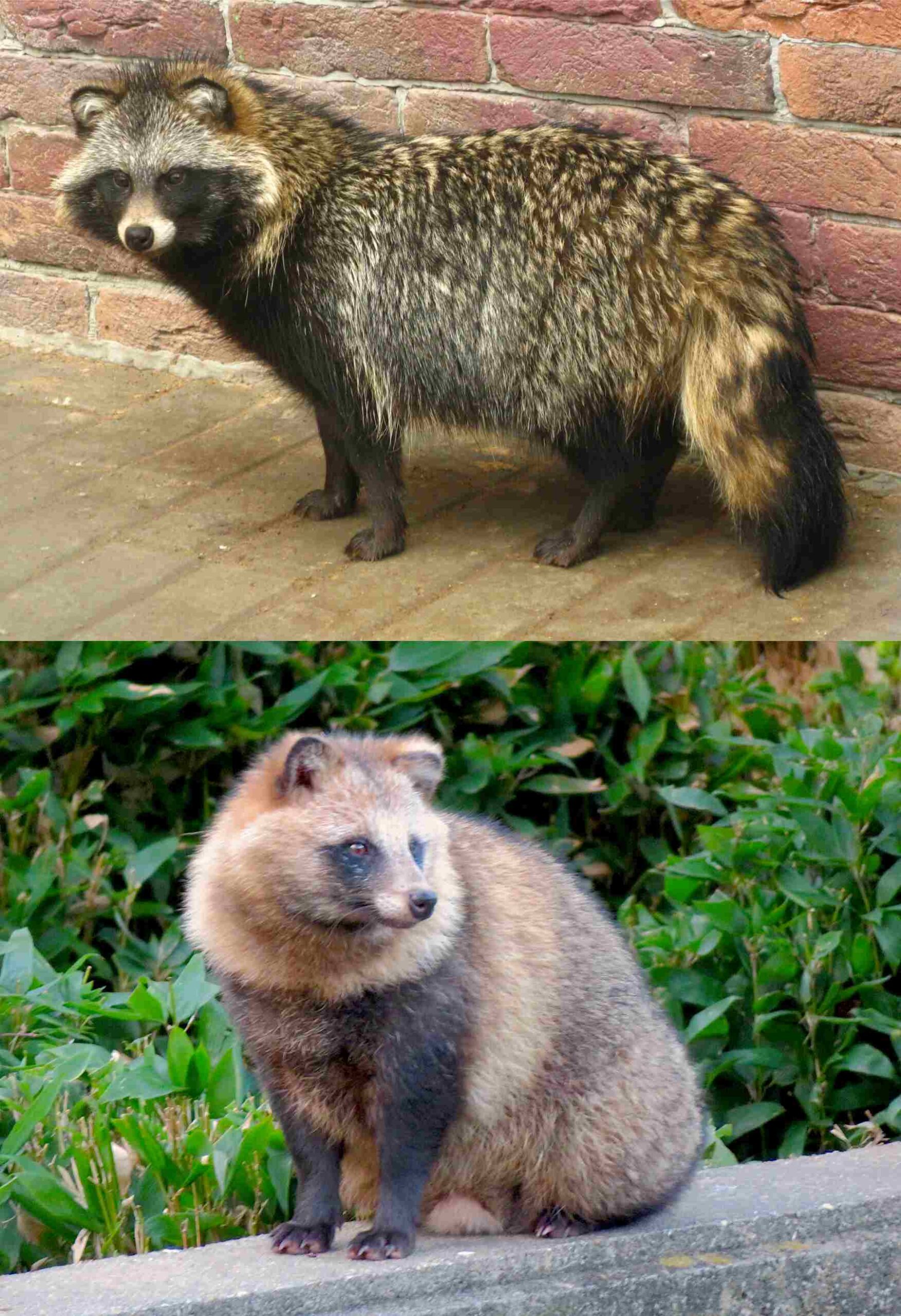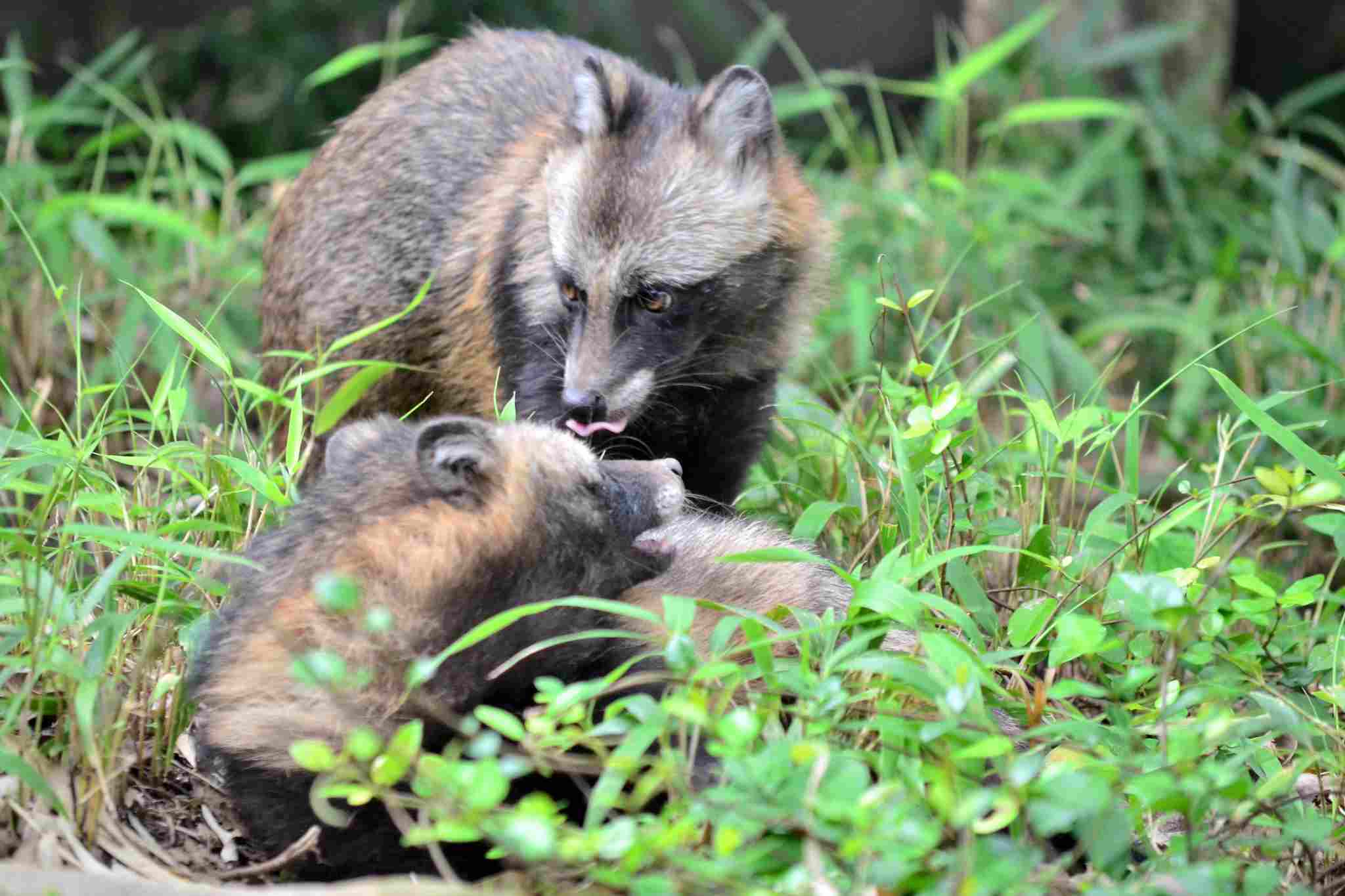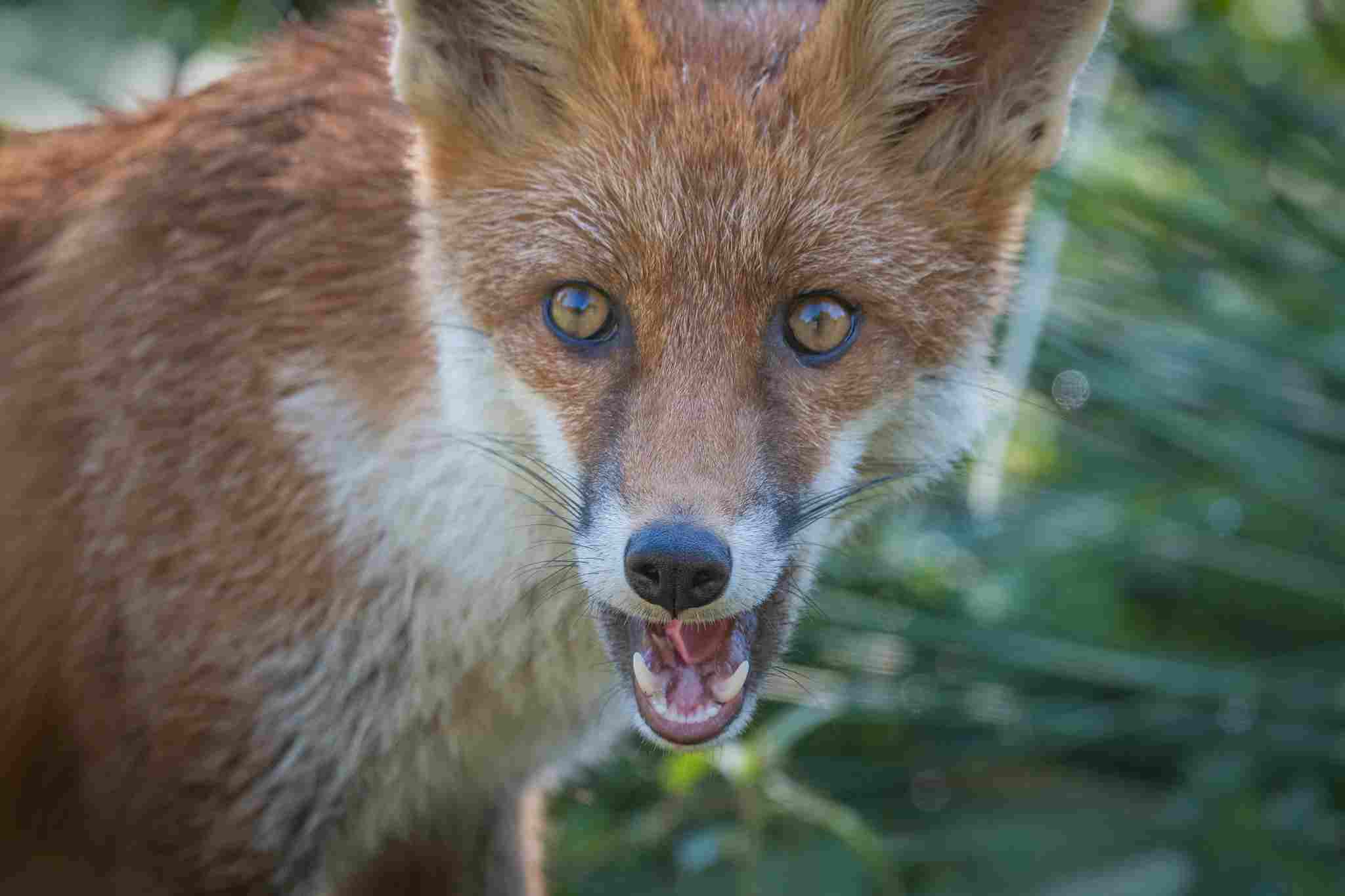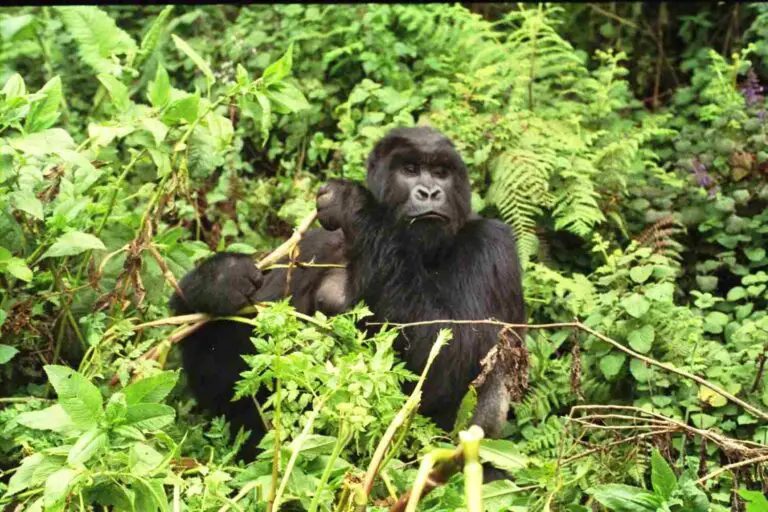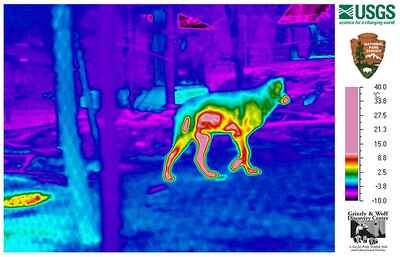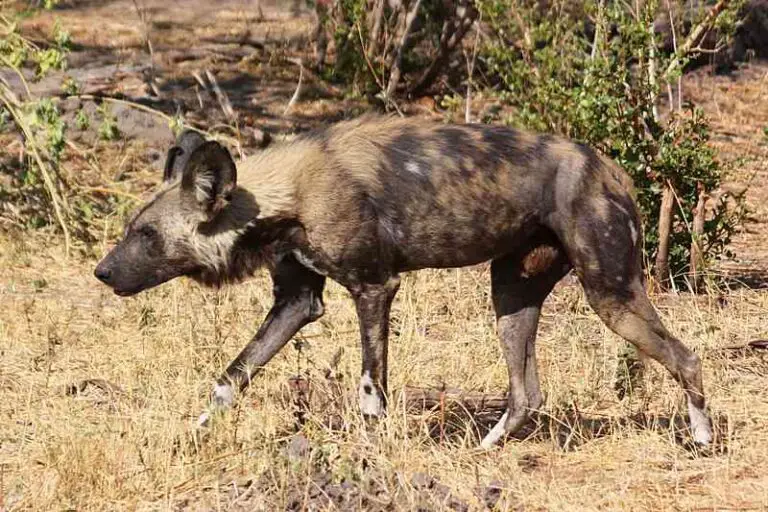Raccoon Vs Red Panda Size, Weight, Overall Comparison
In exploring a theoretical encounter between a raccoon and a red panda, we unravel the distinctions between these seemingly similar creatures. Despite their visual resemblance, a detailed examination reveals differences in markings, facial features, and overall physiology. In a confrontation, the raccoon’s larger size, greater weight, strength, and average aggressiveness position it as the likely victor, although the physiological similarities suggest a closely contested outcome.
Raccoon vs Red Panda: Unveiling Visual and Physiological Contrasts
In contemplating a potential face-off between a raccoon and a red panda, we dissect the shared and divergent traits that define these distinct mammals. While they may share certain visual features, the raccoon’s physiological advantages make it a formidable opponent in a hypothetical confrontation.
I). Visual Contrasts:
– Red pandas exhibit reddish-brown markings and a rounded face, distinct from the white and black markings and more drawn-out face and snout characteristic of raccoons. These visual disparities underscore their separate evolutionary paths.
II). Physiological Similarities:
– Despite visual differences, raccoons and red pandas share physiological similarities, such as their omnivorous diets, arboreal tendencies, and dexterous front paws. These similarities hint at a commonality in their ecological niches.
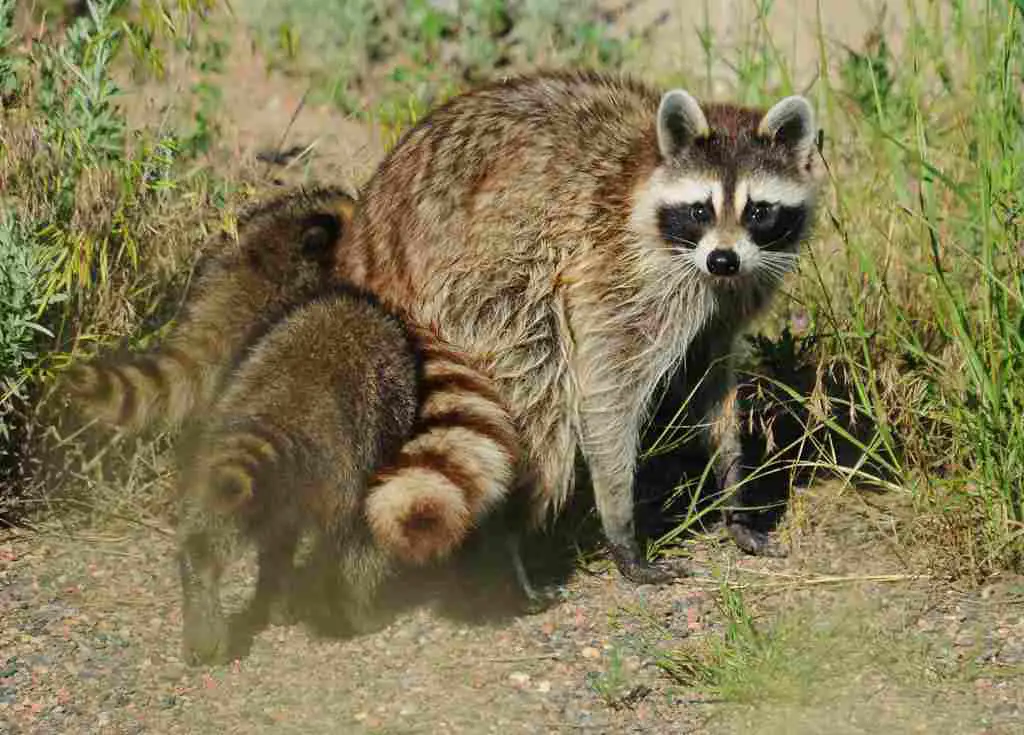
III). Raccoon’s Larger Size and Weight:
– Raccoons, generally larger and heavier than red pandas, possess a physical advantage that can play a decisive role in a potential confrontation. Size and weight often correlate with strength and resilience.
IV). Raccoon’s Strength and Aggressiveness:
– On average, raccoons are known for their strength and a more aggressive demeanor compared to red pandas. These traits give raccoons an edge in a hypothetical fight.
V). Predicting Outcomes:
– In a theoretical scenario, the raccoon’s larger size, greater weight, strength, and average aggressiveness position it as the likely victor over a red panda. However, the physiological similarities suggest that the outcome could be closely contested.
VI). Real-World Considerations:
– Real-world interactions between raccoons and red pandas are improbable due to their distinct habitats and geographic ranges. Nonetheless, the examination of hypothetical confrontations provides insights into the potential outcomes based on their physiological attributes.
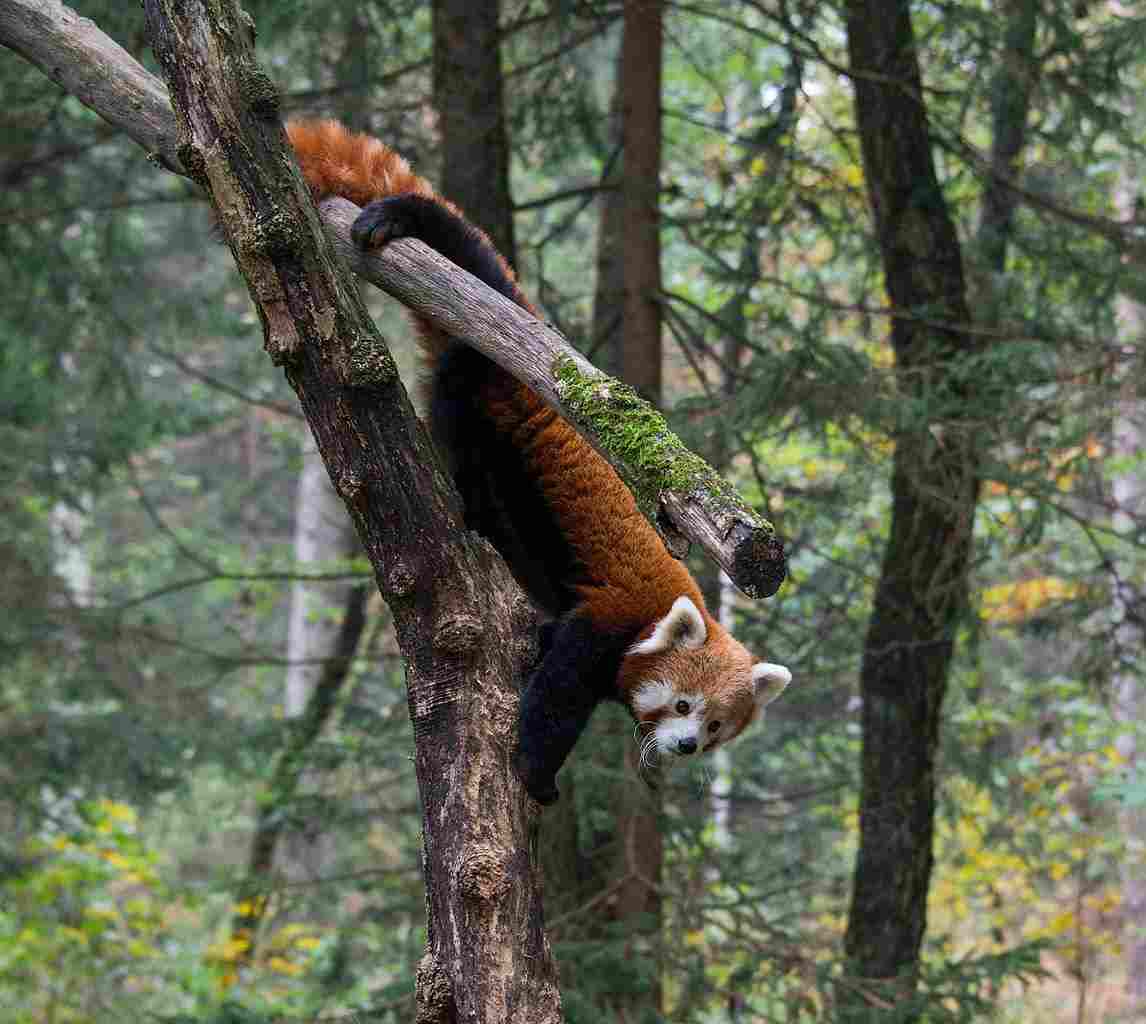
VII). Overall Dynamics:
– This analysis underscores the divergence between raccoons and red pandas despite visual similarities. While raccoons hold advantages in size, weight, and aggression, the physiological commonalities hint at a closely contested outcome in a hypothetical confrontation, highlighting the intricacies of interspecies dynamics.
*Details of Comparison
| Criteria | Raccoon | Red Panda |
| Taxonomy | Procyonidae family | Ailuridae family |
| Appearance | Robust with black mask |
Smaller, cat-like, reddish-brown fur
|
| Size | Generally larger | – |
| Weight | Heavier | – |
| Bite Force (PSI) | Higher estimated | – |
| Physical Offensive Advantages | Powerful claws and bite force |
Semi-retractable claws for climbing
|
| Physical Defensive Advantages | Agile climbers, sharp claws |
Agile climbers, sharp claws
|
| Speed | Capable of higher ground speeds | – |
| Agility | Versatile climber |
Exceptional in trees
|
| Senses | Emphasis on touch, keen smell |
Emphasis on smell, low-light vision
|
| Overall Physical Capacity | Broad range of abilities |
Specialized for arboreal life
|
| Habitat Preference(s) | Versatile, urban adaptability |
Dense, temperate forests
|
| Tracks | Larger with pronounced claw marks |
Smaller, less distinct
|
| Lifespan | 2-7 years |
8-10 years in the wild, up to 14 in captivity
|
| Mode of Feeding | Omnivorous |
Primarily herbivorous
|
| Intelligence | Highly intelligent |
Intelligent, specialized skills
|
| Social Behavior | Generally solitary |
Mostly solitary, occasional social interactions
|
| Mode of Reproduction | Polygamous | Monogamous |
| Parental Behavior | Female primarily cares for young |
Both parents involved
|
| Proximity to Human-Inhabited Areas | Adaptable to urban areas |
Avoids human-inhabited areas
|
| Behavior Toward Humans | Can become habituated | Generally shy |
| Danger Posed to Humans | Not considered dangerous, risk of disease |
Not considered dangerous, shy behavior
|
| Associated Precautions | Disease prevention, waste management |
Conservation strategies, habitat protection
|
| Conservation Status | Least Concern | Vulnerable |
| Conclusion |
Share some characteristics, significant differences in diet, mating, and conservation status
|
Key Points
- Raccoons are generally larger, heavier, and have a higher bite force.
- Red pandas are specialized for arboreal life, with exceptional agility.
- Raccoons are more adaptable to urban environments.
- Red pandas have a longer lifespan and face a higher conservation concern.
- Differences in diet, mating systems, and conservation status highlight unique ecological roles.
1. Taxonomy:
Raccoon (Procyon lotor):
Kingdom: Animalia
Phylum: Chordata
Class: Mammalia
Order: Carnivora
Family: Procyonidae
Genus: Procyon
Species: P. lotor
Red Panda (Ailurus fulgens):
Kingdom: Animalia
Phylum: Chordata
Class: Mammalia
Order: Carnivora
Family: Ailuridae
Genus: Ailurus
Species: A. fulgens
2. Appearance:
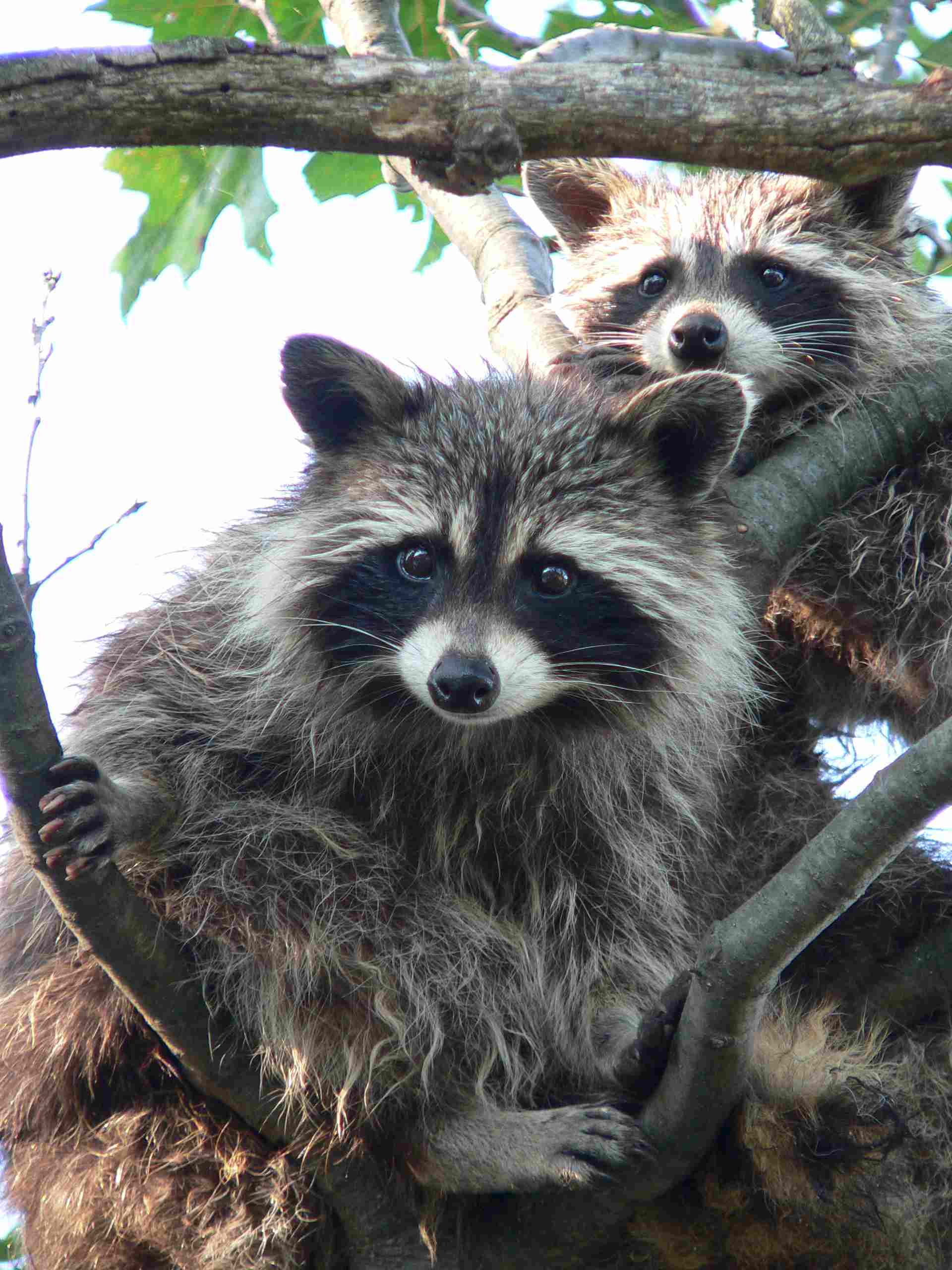
Raccoon:
Robust build with a distinctive black mask across the eyes.
Greyish-brown fur, bushy tail with alternating dark rings.
Sharp claws adapted for climbing and handling food.
Red Panda:
Smaller, with a cat-like appearance and reddish-brown fur.
White face markings, long bushy tail with rings.
Semi-retractable claws suited for climbing trees.
Comparison:
Raccoons have a more robust build, while red pandas are smaller and more cat-like in appearance.
Raccoons have a greyish-brown coloration, contrasting with the reddish-brown fur of red pandas.
Ecological Implications:
Raccoons’ robust build aids in adaptation to various habitats, while red pandas’ smaller size allows them to navigate trees more efficiently.
Differences in appearance may influence predators and prey interactions, affecting ecological roles.
3. Size:
Raccoon:
Adult length: 16 to 28 inches (excluding tail).
Tail length: 8 to 16 inches.
Red Panda:
Adult length: 20 to 26 inches (excluding tail).
Tail length: 11 to 20 inches.
Comparison:
Red pandas are generally smaller in both body and tail length compared to raccoons.
Ecological Implications:
Size differences influence their ecological niches, affecting prey selection, competition, and predator interactions.
4. Weight:
Raccoon:
Adults weigh between 4 to 23 pounds.
Red Panda:
Adults weigh between 6 to 14 pounds.
Comparison:
Raccoons are generally heavier than red pandas.
Ecological Implications:
Weight influences energy requirements, foraging strategies, and potential competition with other species.
5. Bite Force (PSI – Pounds per Square Inch):

Raccoon:
Bite force estimated around 35 PSI.
Red Panda:
Bite force is not well-documented but is generally lower than that of raccoons.
Comparison:
Raccoons have a higher estimated bite force compared to red pandas.
Ecological Implications:
Bite force relates to feeding habits and interactions with prey. Raccoons may have an advantage in manipulating and consuming a variety of food sources.
6. Physical Offensive Advantages:
Raccoon:
Sharp claws and strong bite force enable effective hunting and scavenging.
Red Panda:
Semi-retractable claws aid in climbing and grasping prey.
Comparison:
Raccoons possess more pronounced offensive capabilities, with powerful claws and a higher bite force.
Ecological Implications:
Differences in offensive capabilities may influence prey selection and competition for resources.
7. Physical Defensive Advantages:
Raccoon:
Agile climbers, they can escape predators by ascending trees.
Sharp claws and teeth serve as defensive tools.
Red Panda:
Agility in trees allows evasion of ground predators.
Can use sharp claws and teeth for defense.
Comparison:
Both species exhibit defensive adaptations, with raccoons relying more on climbing, and red pandas emphasizing agility in trees.
Ecological Implications:
Defensive strategies impact predator-prey dynamics and survival rates within their respective habitats.
8. Speed (Km/hour or Mile/hour):
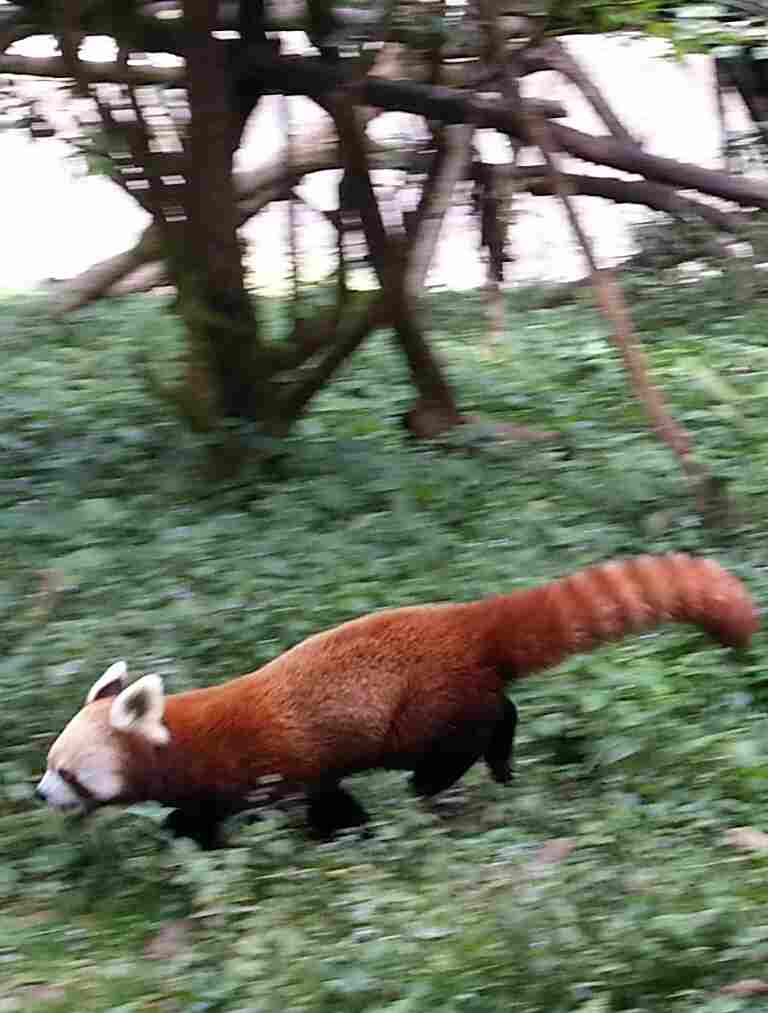
Raccoon:
Can reach speeds of 10-15 mph (16-24 km/h).
Red Panda:
Agile climbers but not known for high-speed ground movement.
Comparison:
Raccoons are capable of higher ground speeds compared to red pandas.
Ecological Implications:
Speed influences hunting efficiency and escape from predators. Raccoons may have an advantage in pursuing prey on the ground.
9. Agility:
Raccoon:
Agile climbers and swimmers, utilizing their dexterous limbs.
Red Panda:
Extremely agile in trees, utilizing a long, bushy tail for balance.
Comparison:
Red pandas showcase exceptional agility, especially in arboreal environments.
Ecological Implications:
Agility impacts foraging strategies, predator avoidance, and niche differentiation within their habitats.
10. Senses:
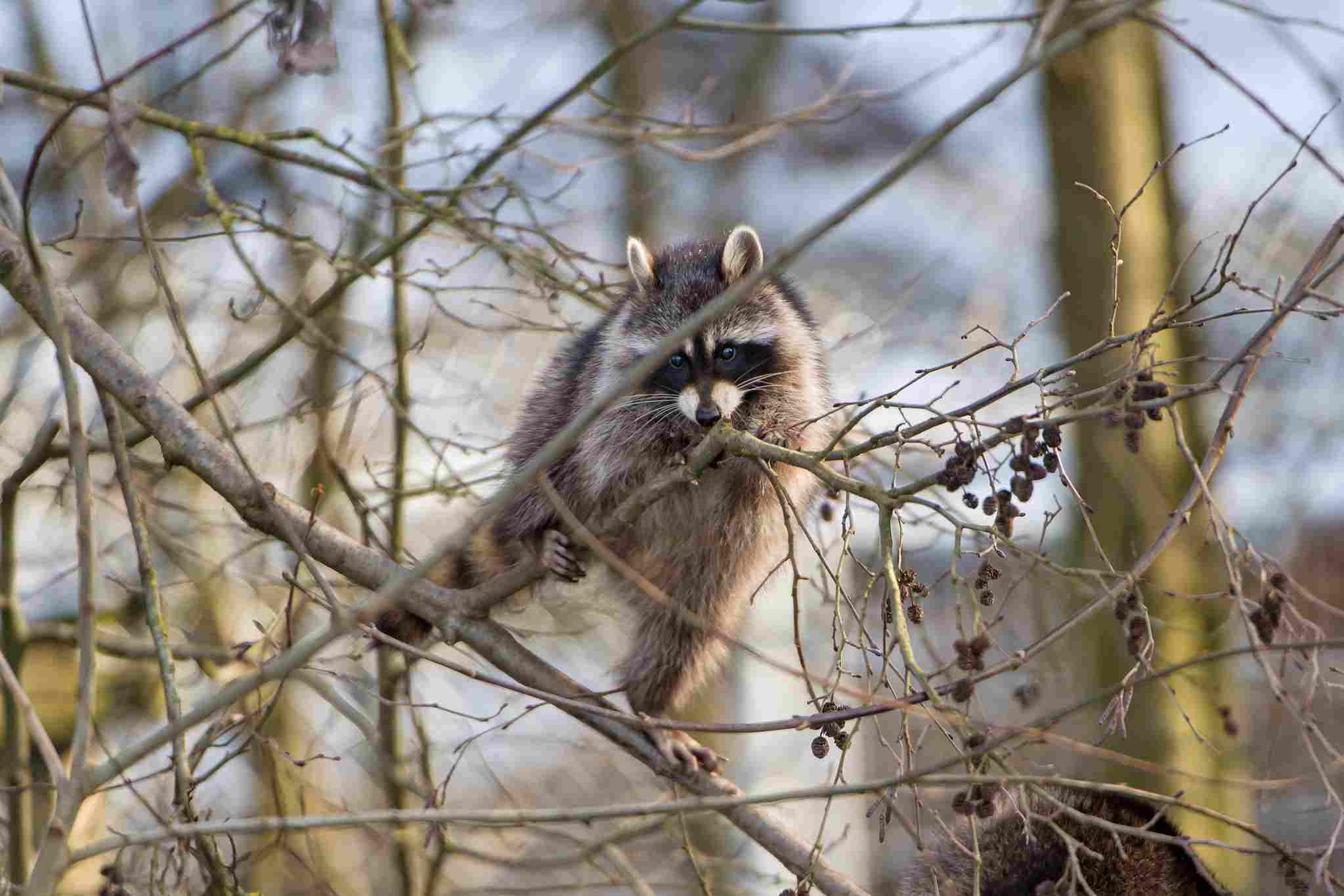
Raccoon:
Excellent night vision and sense of touch with their sensitive paws.
Keen sense of smell.
Red Panda:
Well-developed sense of smell and hearing.
Eyes adapted for low light conditions.
Comparison:
Both species rely on a combination of enhanced senses, with raccoons emphasizing touch, and red pandas emphasizing smell and low-light vision.
Ecological Implications:
Sensory adaptations influence hunting, foraging, and overall awareness in their respective environments.
11. Overall Physical Capacity:
Raccoon:
Versatile climbers, strong swimmers, and adept on land.
Red Panda:
Highly adapted to arboreal life, with climbing as a primary mode of movement.
Comparison:
Raccoons display a broader range of physical capacities, including swimming, compared to red pandas.
Ecological Implications:
Overall physical capacities impact habitat selection, resource utilization, and interactions with other species.
12. Habitat Preference(s):
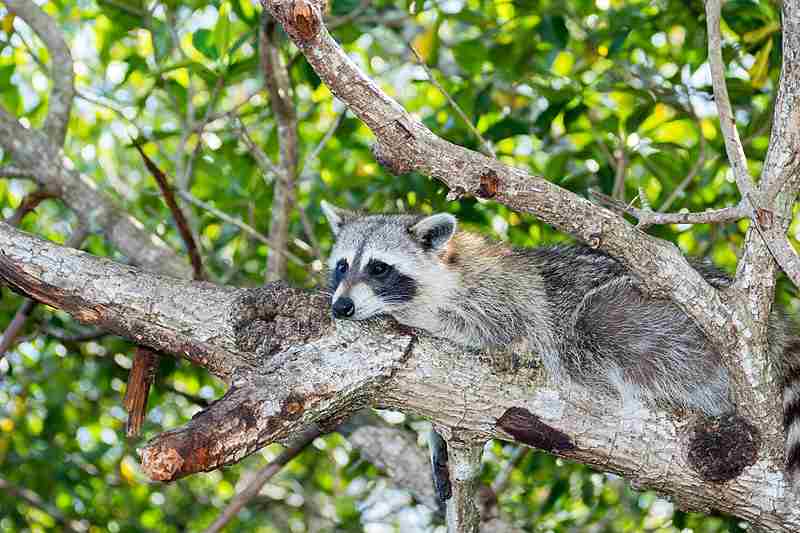
Raccoon:
Versatile and adaptable, found in a variety of habitats including forests, urban areas, and wetlands.
Red Panda:
Prefer dense, temperate forests with bamboo undergrowth.
Comparison:
Raccoons exhibit a broader habitat range compared to the more specialized habitat preference of red pandas.
Ecological Implications:
Habitat preferences influence ecosystem roles, resource availability, and potential interactions with other species.
13. Tracks:
Raccoon:
Paw prints with distinct claw marks, often showing a diagonal walking pattern.
Red Panda:
Smaller paw prints, resembling those of a cat, with claw marks less pronounced.
Comparison:
Raccoon tracks are larger with more prominent claw marks compared to the smaller, less distinct tracks of red pandas.
Ecological Implications:
Tracking differences can aid researchers in population studies, ecological monitoring, and habitat assessments for each species.
14. Lifespan:
Raccoon:
In the wild, typically 2 to 3 years, but can reach up to 5-7 years.
Red Panda:
Typically 8 to 10 years in the wild, but can live up to 14 years in captivity.
Comparison:
Red pandas generally have a longer lifespan compared to raccoons.
Ecological Implications:
Lifespan influences population dynamics, reproductive strategies, and ecological roles within their respective habitats.
15. Mode of Feeding:
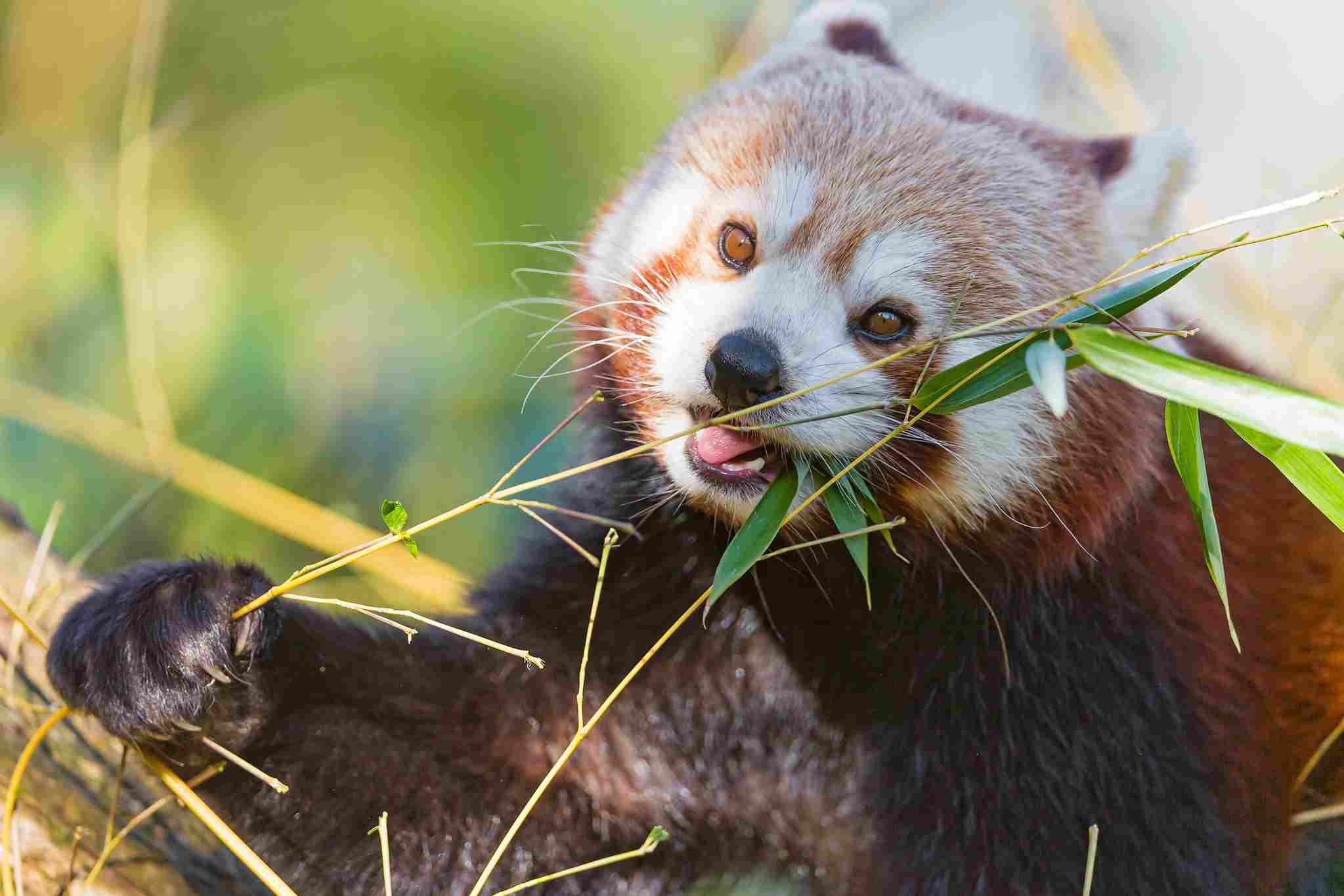
Raccoon:
Omnivorous, feeding on a wide variety of foods, including fruits, insects, small animals, and human leftovers.
Red Panda:
Primarily herbivorous, with a diet consisting mainly of bamboo leaves and shoots, supplemented with fruits, insects, and small animals.
Comparison:
Raccoons have a broader, more opportunistic diet compared to the more specialized herbivorous preference of red pandas.
Ecological Implications:
Feeding habits impact competition for resources, ecological relationships, and the species’ role in maintaining ecosystem balance.
16. Intelligence:
Raccoon:
Considered highly intelligent, demonstrating problem-solving abilities and adaptability.
Red Panda:
Intelligent, with a focus on foraging and climbing skills.
Comparison:
Both species exhibit intelligence, with raccoons known for problem-solving and red pandas displaying specialized skills for their environment.
Ecological Implications:
Intelligence influences foraging strategies, adaptability to changing environments, and interactions with other species.
17. Social Behavior:
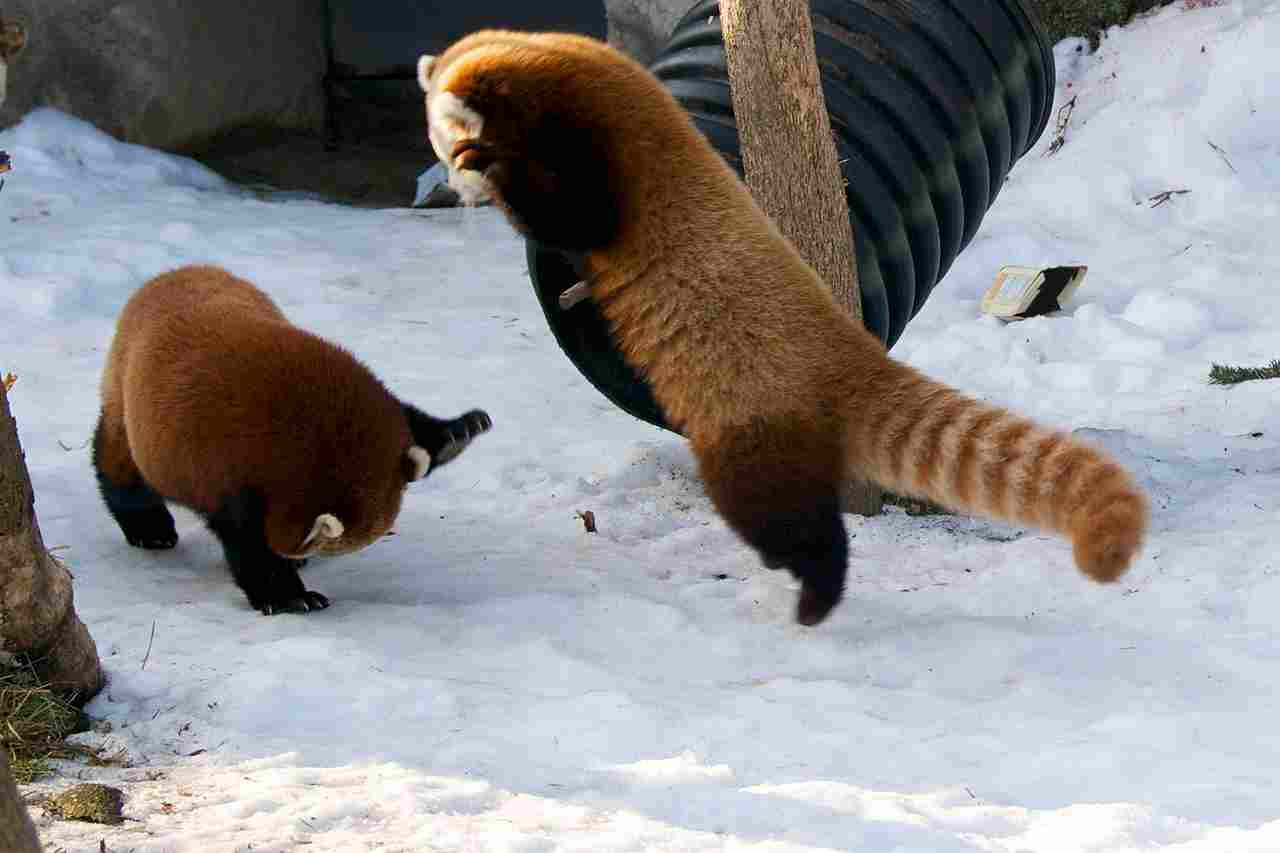
Raccoon:
Generally solitary, but can form loose groups, especially during mating season.
Red Panda:
Mostly solitary, with occasional social interactions, particularly during the mating season.
Comparison:
Both species display a predominantly solitary lifestyle with limited social interactions.
Ecological Implications:
Social behavior affects territory dynamics, mating strategies, and competition for resources within their respective habitats.
18. Mode of Reproduction:
Raccoon:
Polygamous mating system with multiple mates during the breeding season.
Gestation period is approximately 63 days.
Red Panda:
Monogamous mating system, with pairs forming during the breeding season.
Gestation period is approximately 112 to 158 days.
Comparison:
Red pandas exhibit a monogamous mating system, whereas raccoons have a polygamous approach.
Ecological Implications:
Differences in mating systems may impact population dynamics, genetic diversity, and parental investment.
19. Parental Behavior:
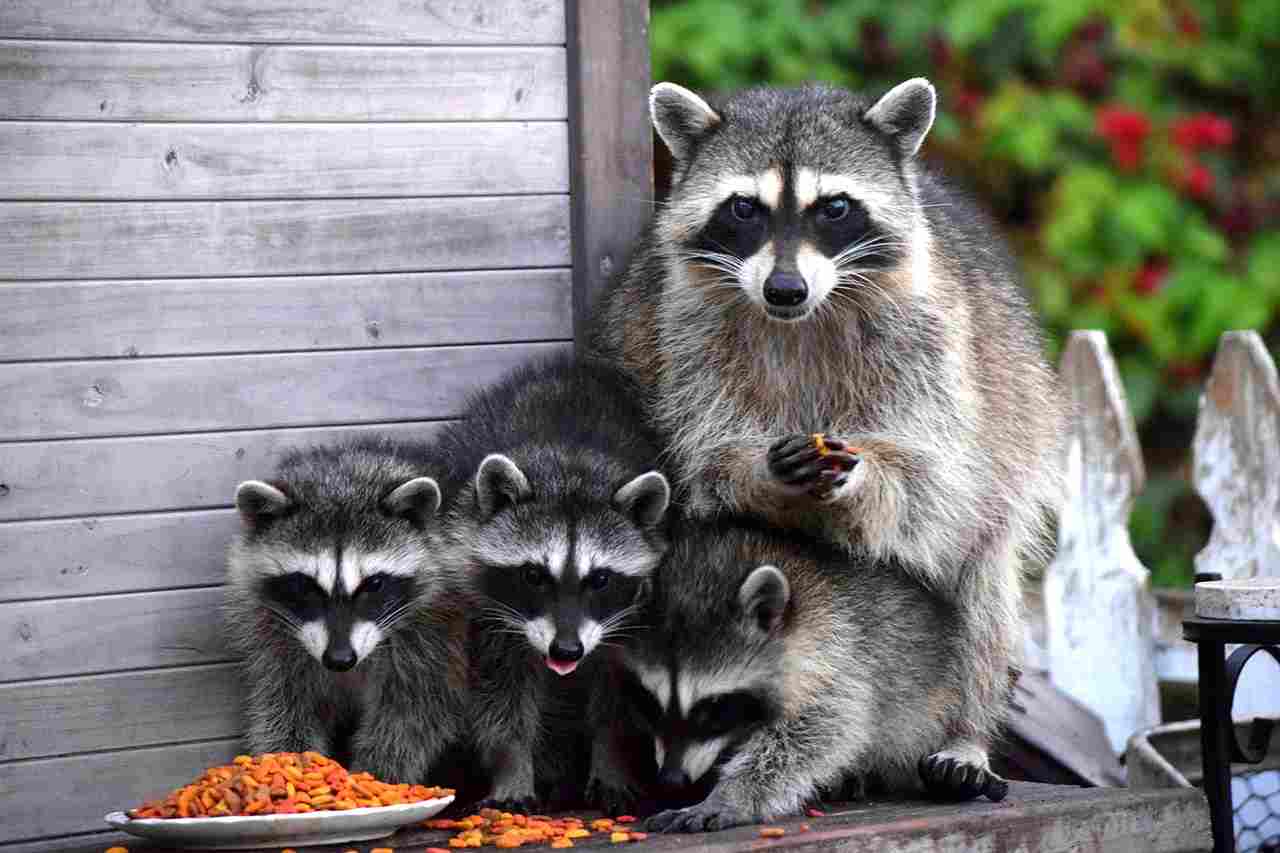
Raccoon:
Female raccoons are primarily responsible for caring for the young.
Kits stay with the mother for several months, learning essential survival skills.
Red Panda:
Both parents contribute to raising the cubs.
Cubs stay with their parents for an extended period, learning climbing and foraging skills.
Comparison:
Red pandas exhibit a higher level of parental involvement compared to raccoons.
Ecological Implications:
Parental behavior influences the survival and development of offspring, impacting population dynamics and ecological roles.
20. Proximity to Human-Inhabited Areas:
Raccoon:
Highly adaptable to urban environments, often found scavenging for food in garbage bins.
Red Panda:
Generally avoid human-inhabited areas, preferring remote and less disturbed forests.
Comparison:
Raccoons show a higher tolerance for living in close proximity to human-inhabited areas compared to red pandas.
Ecological Implications:
Proximity to human settlements affects exposure to anthropogenic threats, resource availability, and potential conflicts with humans.
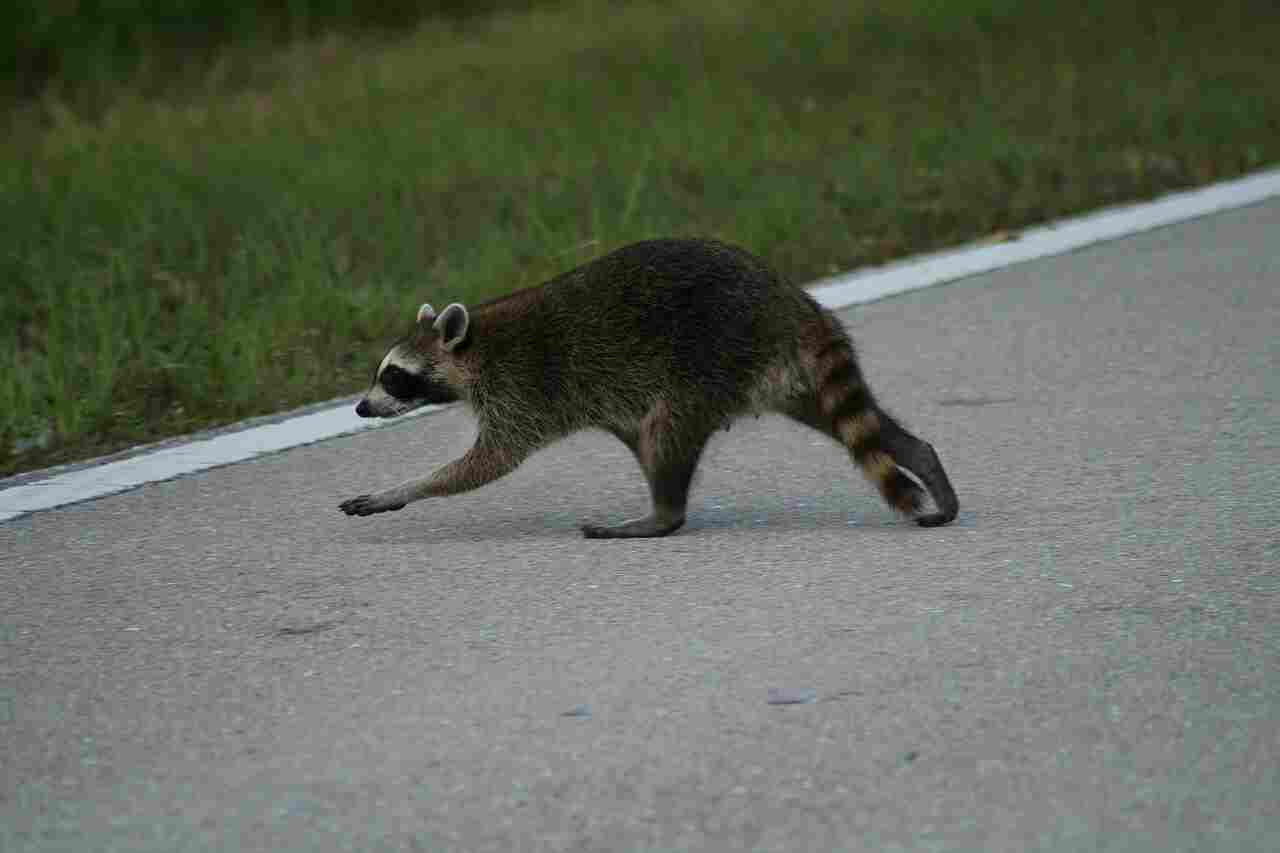
21. Behavior Toward Humans:
Raccoon:
Can become habituated to humans, potentially leading to increased interaction and conflict.
Red Panda:
Typically shy and avoidant of human contact, reducing the likelihood of conflict.
Comparison:
Raccoons are more prone to habituation and interactions with humans compared to the generally shy behavior of red pandas.
Ecological Implications:
Behavior toward humans impacts conservation efforts, human-wildlife conflict, and the potential for anthropogenic threats to each species.
22. Danger Posed to Humans:
Raccoon:
Generally not considered dangerous, but can carry diseases such as rabies.
May pose a threat if cornered or threatened, with the potential for bites or scratches.
Red Panda:
Not typically considered dangerous to humans.
Generally shy and more likely to retreat than confront.
Comparison:
Raccoons may pose a slightly higher risk due to potential disease transmission and defensive behavior.
Ecological Implications:
Perceived danger impacts public perception, management strategies, and conservation efforts for each species.
23. Associated Precautions:
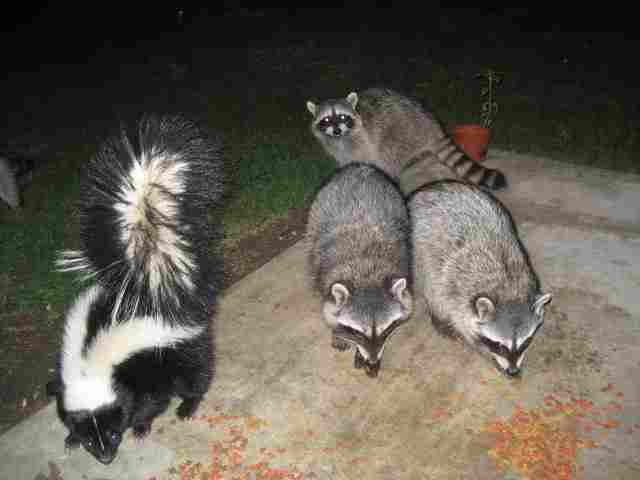
Raccoon:
Caution advised in areas with a high raccoon population to avoid potential disease transmission.
Proper waste disposal to minimize scavenging behaviors.
Red Panda:
Conservation efforts focus on habitat protection to minimize human impact.
Research and monitoring to understand and mitigate potential threats.
Comparison:
Precautions for raccoons emphasize disease prevention and waste management, while precautions for red pandas focus on conservation strategies.
Ecological Implications:
Implementing precautions helps reduce potential harm to both species and promotes coexistence with humans.
24. Conservation Status:
Raccoon:
Least Concern (LC) on the IUCN Red List.
Thrives in a variety of habitats, including urban areas.
Red Panda:
Vulnerable (VU) on the IUCN Red List.
Faces threats such as habitat loss, poaching, and climate change.
Comparison:
Red pandas have a higher conservation concern compared to raccoons.
Ecological Implications:
Differences in conservation status highlight the need for targeted conservation efforts and habitat protection.
Summary of Comparison
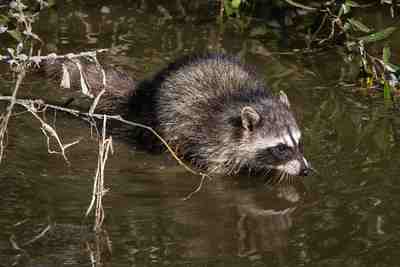
Taxonomy:
Raccoon: Procyonidae family; Red Panda: Ailuridae family.
Appearance:
Raccoon: Robust with a black mask; Red Panda: Smaller, cat-like with reddish-brown fur.
Size:
Raccoon: Generally larger than red pandas.
Weight:
Raccoon: Heavier compared to red pandas.
Bite Force (PSI):
Raccoon: Higher estimated bite force.
Physical Offensive Advantages:
Raccoon: Powerful claws and bite force.
Physical Defensive Advantages:
Both exhibit defensive adaptations; raccoons emphasize climbing, red pandas emphasize agility.
Speed:
Raccoon: Capable of higher ground speeds.
Agility:
Red pandas display exceptional agility in trees.
Senses:
Both rely on enhanced senses; raccoons emphasize touch, red pandas emphasize smell and low-light vision.
Overall Physical Capacity:
Raccoons have a broader range of physical capacities.
Habitat Preference(s):
Raccoons are versatile; red pandas prefer dense, temperate forests.
Tracks:
Raccoon tracks are larger with more pronounced claw marks.
Lifespan:
Red pandas generally have a longer lifespan.
Mode of Feeding:
Raccoons are omnivorous; red pandas are primarily herbivorous.
Intelligence:
Both exhibit intelligence; raccoons for problem-solving, red pandas for specialized skills.
Social Behavior:
Both are predominantly solitary with limited social interactions.
Mode of Reproduction:
Raccoons have a polygamous system; red pandas are monogamous.
Parental Behavior:
Red pandas exhibit higher parental involvement.
Proximity to Human-Inhabited Areas:
Raccoons are more adaptable to urban environments.
Behavior Toward Humans:
Raccoons can become habituated; red pandas are generally shy.
Danger Posed to Humans:
Raccoons may pose a slightly higher risk.
Associated Precautions:
Different precautions for disease prevention and conservation strategies.
Conservation Status:
Raccoons are Least Concern; red pandas are Vulnerable.
Conclusion
I. Similarities:
Both raccoons and red pandas belong to the order Carnivora and share certain adaptations for climbing and foraging.
Both exhibit intelligence and adaptability, contributing to their survival in diverse environments.
II. Differences:
Red pandas are herbivorous and have a monogamous mating system, while raccoons are omnivorous and have a polygamous mating system.
Red pandas face a higher conservation risk compared to raccoons due to habitat loss and other threats.
